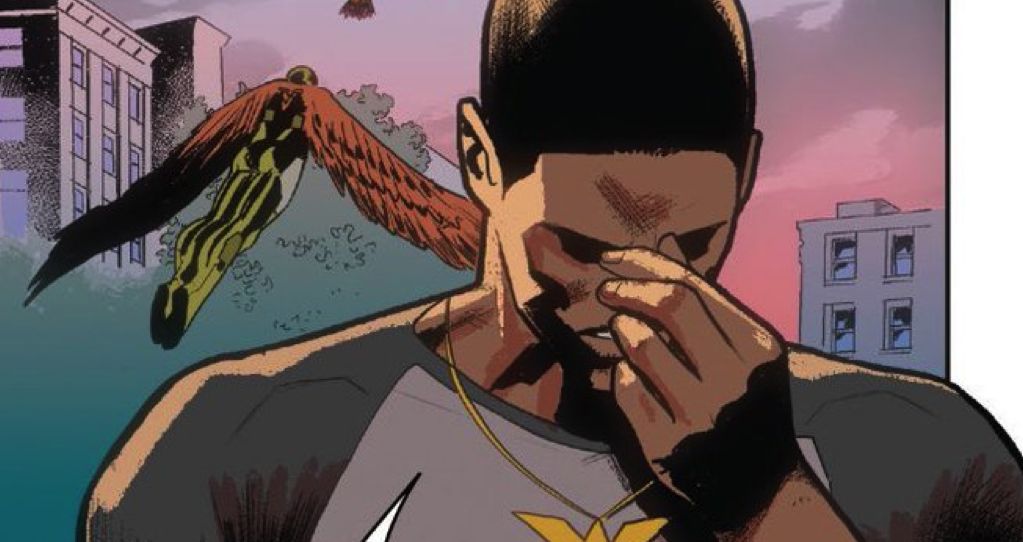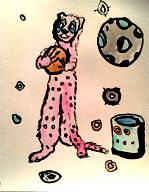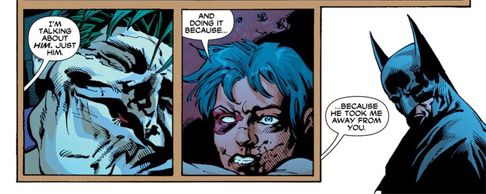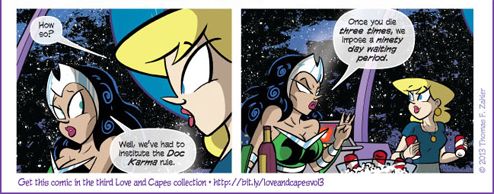
Reports Were Greatly Exaggerated: Death and Fatalities in Hero Comics
2016 and 2017 have taught us that fake news can hurt, especially when it involves death. It can stress us out. What’s more, it can trigger intense anxiety and depression. The truth hurts, but someone crafting deceptions, either by accident or on purpose, can stab us in the gut.
Last week in a fandom, people found out that a fan artist was dead, a beloved woman who made viewers happy with ferrets and dragons. One of her friends posted a heartbreaking message on Tumblr about it. I shared it, as did my friends. I even drew a ferret among stars and planets to deal with my sadness. There was also some anger, and feeling like death was everywhere, since my high school sent an email mentioning that one of my classmates had died on New Year’s day.
We mourned from Tuesday until Wednesday afternoon, when the artist messaged friends on social media, including the one who made the announcement, and said she wasn’t dead, just taking a break. She made it clear that she was touched by how everyone cared.
Normally this news would be a relief. In this fandom, however, a troll had faked their death several times and caused a lot of stress; the announcement with the artist, while completely different, produced similar stress. To deal with it, I thought of another scenario where death is cheap: superhero comics.
Mainstream Death
The Silver Age teased about Superman and Batman’s death in Imaginary Stories, or alternative stories that wouldn’t be allowed in canon. DC also discussed a parallel Earth where an elderly Bruce Wayne died after his daughter Helena came of age, and she takes up crimefighting in his honor. Regardless, DC established that these stories were not part of the main canon. They couldn’t be.
The Dark Age of comics wanted to prove heroes and villains could not reign immortal. We had Jason Todd die the first time in The Dark Knight Returns, an alternative and morbid future. Then he died for real in canon, and Batman became grimmer. As an older Jason points out to Batman, the fact that Jason came back to life decades later doesn’t make his death less traumatic or tragic for any of the Bat family members. Dick, who wanted to adopt Jason before Crisis on Infinite Earths rewrote their timelines, was devastated. Jason himself is furious that his killer is still alive.
We remember Superman’s death from 1992, either from the comics themselves or the DC history book that covered it. Likewise, the new 2010s brought us Batman’s death. They came back to life after months of fanfare and mourning both within and outside the comic world. Other characters have died and have returned wrong: Jason Todd the second Robin (glares at Jimmy Starlin), Joshua Wilson aka Jericho, Aquaman, Hawkman and Hawkgirl. Regardless, Death comes for everyone but can be persuaded to change her mind. Her Sandman incarnation would probably have much to say on the subject.
Reactions
We used to feel shocked. Now we just feel deadened. We’ve learned that we cannot accept a death at face value, unless seeing it in a new medium. The comics world needs its cash cows alive.
The webcomic Love and Capes discusses all the cliches involved with hero deaths. While they kill off someone important, who doesn’t return, the heroes in charge of exhuming the body have to make sure the corpse isn’t a clone, a dummy, or a shapeshifter. Meanwhile, wizard Doc Karma has to make sure the hero in question doesn’t return from the dead as a malevolent spirit. He’s returned from the dead multiple times, which causes regular rule changes.
Love and Capes also discusses how if these heroes were real, and related to us, their deaths would be painful each time to friends and family members. Our lead The Crusader cracks some gallows humor, but he remembers a timeline where he died thanks to Evil Brain. He and his wife Abby have to memorize a cover story for knowing a dead hero’s civilian identity, and to comfort the survivors. When Superman died in 1992, for example, Lois held his body and begged him to stay with her. Jonathan Kent would suffer a heart attack from the grief of losing his son. Batman’s sons had it just as bad; Damian Wayne tried to claim the legacy spot while attempting to boot out veteran Tim Drake.
How to Apply This to Real Life
I think we all would like a comic plot line where a beloved public figure or hero comes back from the dead and saves the day. (Carrie Fisher, anyone?) Goodness knows people ran a kickstarter for Betty White in 2016 to keep her alive. The closest we will get, however, is to when we see that someone’s announcement of their death was fake.
My hurt comes from viewing the real-life announcement as deceit, as well as from the grieving. If we have time to get through our grieving, the way Lois and the Robins did, we can find a way to process it. It would also be nice if people don’t fake their deaths so that such announcements are accidents.
For the rest of the year, if I see that someone who isn’t a celebrity has died, I’m googling for obituaries. I’m going to assume that everyone I see online becomes immortal after interacting with the World Wide Web, and will have sources. Superman was a journalist, and he came back as a full-fledged hero.











